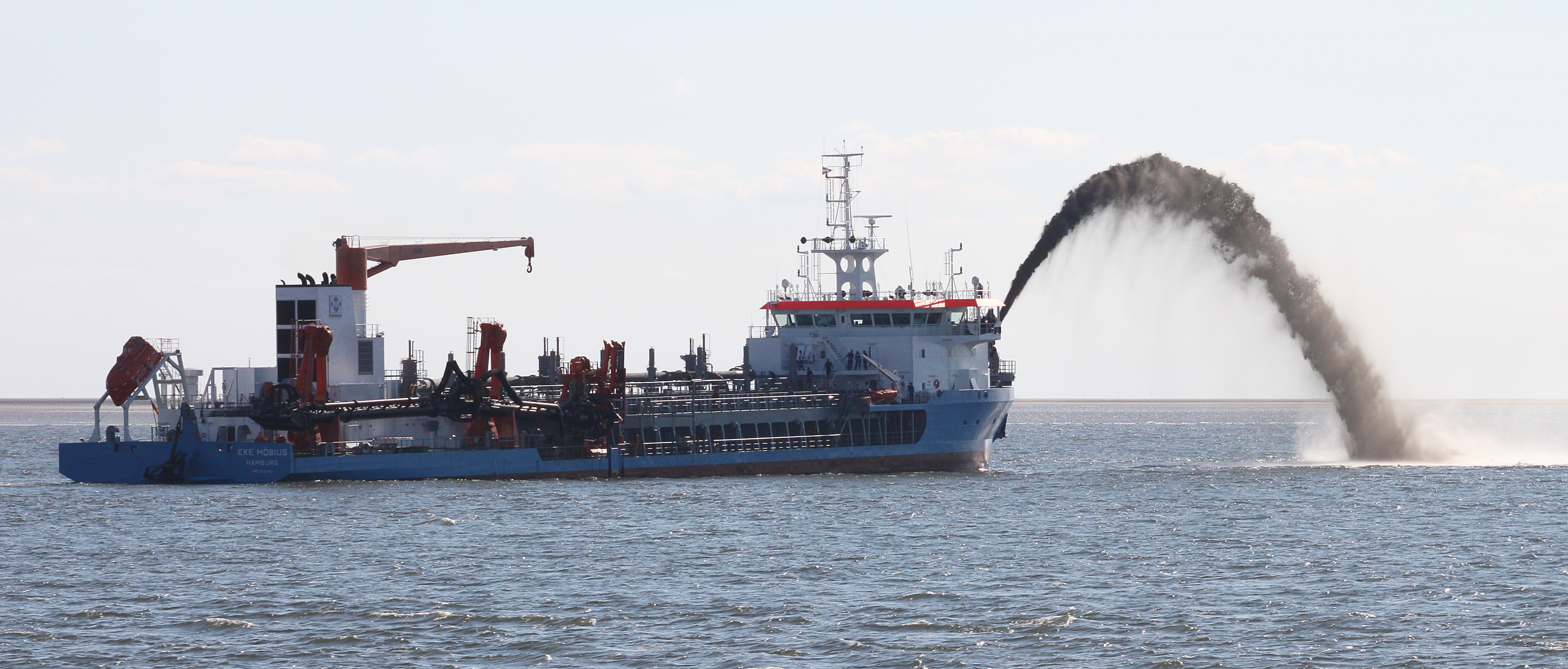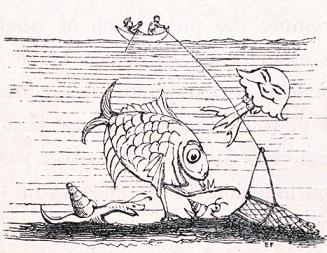Ocean Dredging on:
[Wikipedia]
[Google]
[Amazon]
Ocean dredging was an 

oceanography
Oceanography (), also known as oceanology and ocean science, is the scientific study of the oceans. It is an Earth science, which covers a wide range of topics, including ecosystem dynamics; ocean currents, waves, and geophysical fluid dynamic ...
technique introduced in the nineteenth century and developed by naturalist Edward Forbes
Edward Forbes FRS, FGS (12 February 1815 – 18 November 1854) was a Manx naturalist. In 1846, he proposed that the distributions of montane plants and animals had been compressed downslope, and some oceanic islands connected to the mainlan ...
. This form of dredging
Dredging is the excavation of material from a water environment. Possible reasons for dredging include improving existing water features; reshaping land and water features to alter drainage, navigability, and commercial use; constructing da ...
removes substrate and fauna specifically from the marine environment
Marine habitats are habitats that support marine life. Marine life depends in some way on the saltwater that is in the sea (the term ''marine'' comes from the Latin ''mare'', meaning sea or ocean). A habitat is an ecological or environmental ...
. Ocean dredging techniques were used on the HMS Challenger expeditions as a way to sample marine sediment and organisms.
History
Edward Forbes
Edward Forbes
Edward Forbes FRS, FGS (12 February 1815 – 18 November 1854) was a Manx naturalist. In 1846, he proposed that the distributions of montane plants and animals had been compressed downslope, and some oceanic islands connected to the mainlan ...
would lay out the dredged material on the deck to examine, preserve and study it. The practice was chronicled in a remembrance of Forbes by William Jerdan
William Jerdan FSA (16 April 1782 – 11 July 1869), Scottish journalist, was born at Kelso, Scotland.
During the years between 1799 and 1806, he spent short periods in a country lawyer's office, a London West India merchant's counting hou ...
in his 1866 book ''Men I Have Known''.
HMS ''Challenger''
Ocean dredging was a common sampling technique used on theChallenger expedition
The ''Challenger'' expedition of 1872–1876 was a scientific program that made many discoveries to lay the foundation of oceanography. The expedition was named after the naval vessel that undertook the trip, .
The expedition, initiated by Wil ...
. The expedition, led by oceanographer John Murray and chief scientist Charles Wyville Thomson, set sail in 1872 and returned to England in 1876. The ship was equipped with 34 dredges and 20 dredge nets, completing 133 dredges at 111 stations during the 4 year long expedition. Thomson and Murray detail the following instructions for surveying dredged organisms:
"Examine mud brought up by dredge from different depths for livingThe expedition successfully dredged, collected, and preserved marine sediments, plants, algae, and invertebrates. The Challenger expedition is attributed to discovering approximately 4,700 new marine species and expanding the current knowledge of ocean sediments and geology.diatom A diatom (Neo-Latin ''diatoma''), "a cutting through, a severance", from el, διάτομος, diátomos, "cut in half, divided equally" from el, διατέμνω, diatémno, "to cut in twain". is any member of a large group comprising sev ...s; examine also for the same purpose the stomachs of '' Salpae'' and other marine animals."
Seafloor effects
Ocean dredging can negatively affectbenthic
The benthic zone is the ecological region at the lowest level of a body of water such as an ocean, lake, or stream, including the sediment surface and some sub-surface layers. The name comes from ancient Greek, βένθος (bénthos), meaning "t ...
ecosystems. When dredging equipment is moved along the seafloor, habitat-forming epifauna is damaged or removed. As emergent coral
Corals are marine invertebrates within the class Anthozoa of the phylum Cnidaria. They typically form compact colonies of many identical individual polyps. Coral species include the important reef builders that inhabit tropical oceans and sec ...
s, sponge
Sponges, the members of the phylum Porifera (; meaning 'pore bearer'), are a basal animal clade as a sister of the diploblasts. They are multicellular organisms that have bodies full of pores and channels allowing water to circulate through t ...
s, and seagrasses
Seagrasses are the only flowering plants which grow in marine environments. There are about 60 species of fully marine seagrasses which belong to four families (Posidoniaceae, Zosteraceae, Hydrocharitaceae and Cymodoceaceae), all in the orde ...
are damaged there is less habitat complexity for juvenile fishes to find protection in. Dredging also removes the sand waves
A sand wave is a lower regime sedimentary structure that forms across from tidal currents.
Formation
Sand waves are formed through the action of the wind or water (through waves or tidal currents).
Sand waves form also underwater.
See also ...
in which juvenile Atlantic cod
The Atlantic cod (''Gadus morhua'') is a benthopelagic fish of the family Gadidae, widely consumed by humans. It is also commercially known as cod or codling.
The top 2–6 cm of marine substrate is disturbed during dredging, which can have negative impacts on deposit feeders, nutrient flux, and burrowing species. Dredging is often banned or highly restricted within


marine protected areas
Marine protected areas (MPA) are protected areas of seas, oceans, estuaries or in the US, the Great Lakes. These marine areas can come in many forms ranging from wildlife refuges to research facilities. MPAs restrict human activity for a conserv ...
in order to protect recovering ecosystems.
Equipment used
Dredging in the marine environment can be carried out with a variety of equipment, depending on the purpose of the dredge. If the purpose is to remove sand or redistribute sediment, then adredge drag head
{{unreferenced, date=July 2018
A dredge drag head is used by a trailing suction hopper dredger to collect sand from the sea floor.
The dredge drag head is a steel structure that is connected to the dredger by a suction pipe. Supported by the g ...
attached to a trailing suction hopper dredger
A trailing suction hopper dredger is a ship that has a full sailing capacity used to maintain navigable waterways, deepening the maritime canals that are threatened to become silted, to construct new land elsewhere or to replace sand eroded by ...
ship is used. A fishing dredge
A fishing dredge, also known as a scallop dredge or oyster dredge, is a kind of dredge which is towed along the bottom of the sea by a fishing boat in order to collect a targeted edible bottom-dwelling species. The gear is used to fish for scallo ...
(also known as a scallop dredge) is used for collecting edible species of oysters, mussels
Mussel () is the common name used for members of several families of bivalve molluscs, from saltwater and freshwater habitats. These groups have in common a shell whose outline is elongated and asymmetrical compared with other edible clams, which ...
, scallops
Scallop () is a common name that encompasses various species of marine bivalve mollusks in the taxonomic family Pectinidae, the scallops. However, the common name "scallop" is also sometimes applied to species in other closely related famil ...
, clams
Clam is a common name for several kinds of bivalve molluscs. The word is often applied only to those that are edible and live as infauna, spending most of their lives halfway buried in the sand of the seafloor or riverbeds. Clams have two ...
, and crabs
Crabs are decapod crustaceans of the infraorder Brachyura, which typically have a very short projecting "tail" (abdomen) ( el, βραχύς , translit=brachys = short, / = tail), usually hidden entirely under the thorax. They live in all the ...
from the seafloor.


See also
*Marine sediment
Marine sediment, or ocean sediment, or seafloor sediment, are deposits of insoluble particles that have accumulated on the seafloor. These particles have their origins in soil and rocks and have been transported from the land to the sea, mainly ...
* Terrigenous sediment
In oceanography, terrigenous sediments are those derived from the erosion of rocks on land; that is, they are derived from ''terrestrial'' (as opposed to marine) environments. Consisting of sand, mud, and silt carried to sea by rivers, their com ...
* Deep sea mining
Deep sea mining is a growing subfield of experimental seabed mining that involves the retrieval of minerals and deposits from the ocean floor found at depths of or greater. As of 2021, the majority of marine mining efforts are limited to shal ...
* Coastal erosion
Coastal erosion is the loss or displacement of land, or the long-term removal of sediment and rocks along the coastline due to the action of waves, currents, tides, wind-driven water, waterborne ice, or other impacts of storms. The landward ...
* Trawling
Trawling is a method of fishing that involves pulling a fishing net through the water behind one or more boats. The net used for trawling is called a trawl. This principle requires netting bags which are towed through water to catch different spec ...
References
Oceanography {{ocean-stub